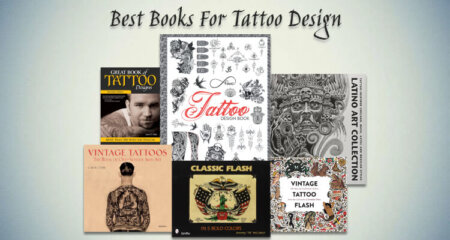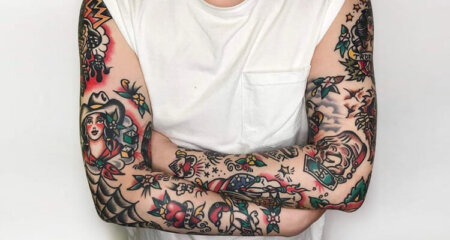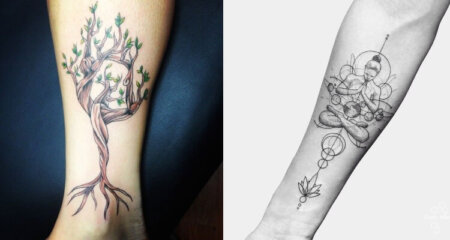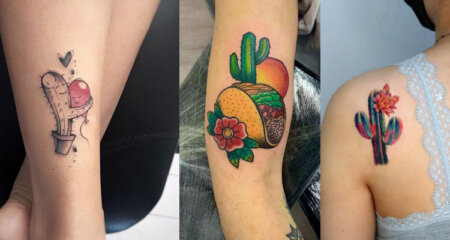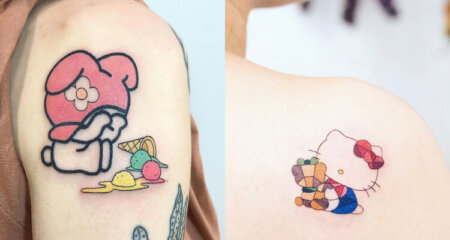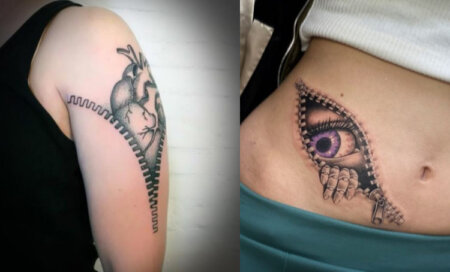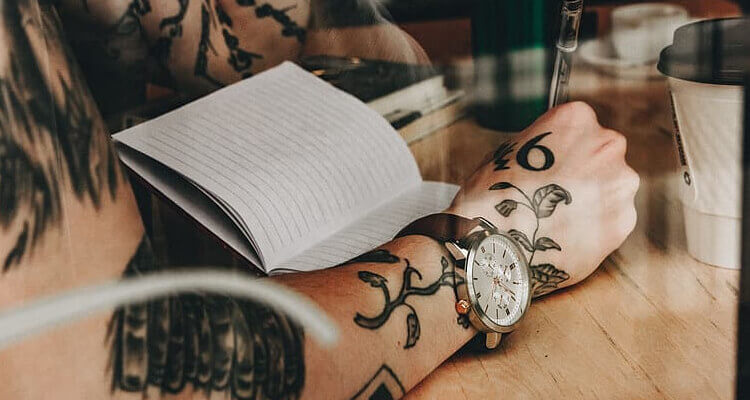
Different Tattoo Styles, Directions and Types in Tattooing
Posted on
1. Watercolor
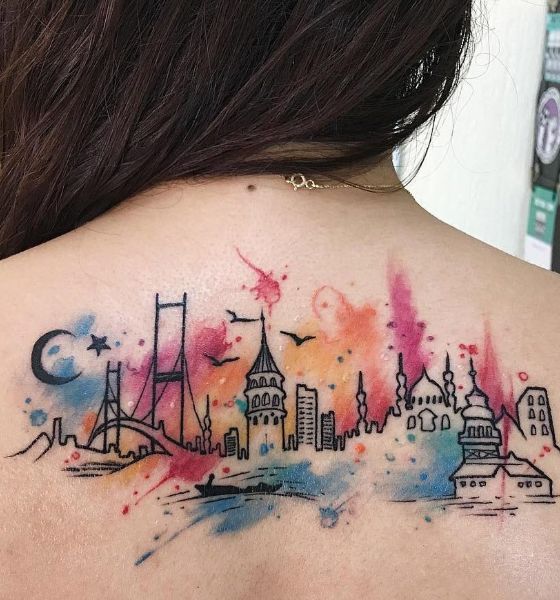
Tattoo in the style of watercolor – a relatively young trend. The watercolor paints used in painting, differ pleasant transparency and high fluidity. This allows you to create paintings with fuzzy, smoothly flowing contours. Based on the principle of imitation of flowing paint, a tattoo is applied. The picture has several thin layers, flowing one into another, pleases with a warm delicate palette, airiness and transparency. Popular directions for images – objects of living nature: flowers, animals and birds – as well as abstract paintings. There are also drawings of comic book and cartoon characters.
2. Biomechanic
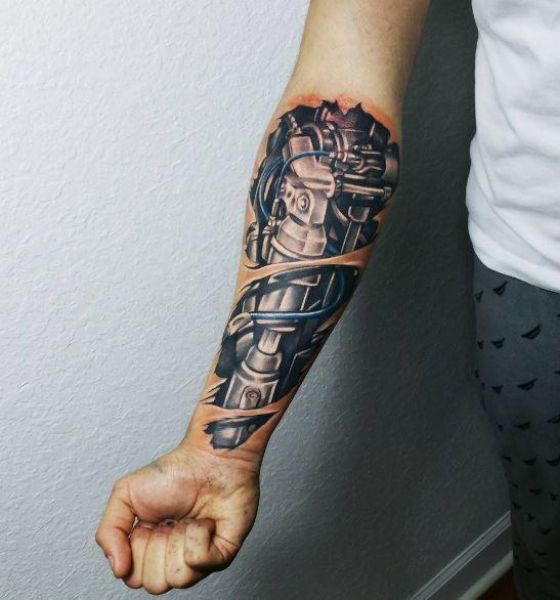
The development of robotics and information technology has given the world a new style in tattoos – biomechanics. The designs depict all sorts of mechanisms and their parts – gears, wires, fasteners – bursting to the surface from under the skin, in simple terms – a synthesis of mechanics and human flesh. Swiss artist Hans Giger, who participated in the design work on the painting “Alien”, is considered to be the founder of the trend. As tattoos in Biomechanics represent entire body parts, it is better to place them on large parts of the body, such as the back, chest and arms.
3. Bioorganic
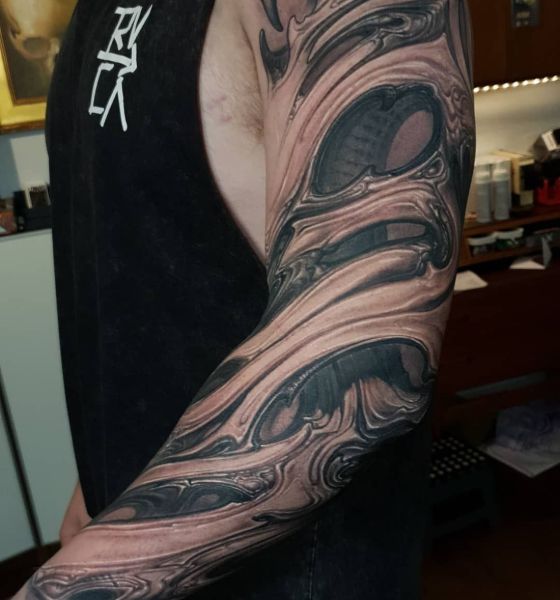
The style of bio-organic has much in common with biomechanics. But mechanical fragments are replaced by organic, natural ones from the world of plants and animals. Vines and branches, tree bark and coral, bones and teeth, and other body parts can be seen through “rips” and “cuts” in the skin. If for biomechanics is the typical darkish color scheme, the bioorganic tattoos delight the eye with a real riot of colors: these tattoos – the brightest. Another difference is more fluidity because straight lines and strict geometricity are not characteristic of nature. Paint in the drawings of this style is dense: empty areas on the skin do not leave.
4. Blackwork
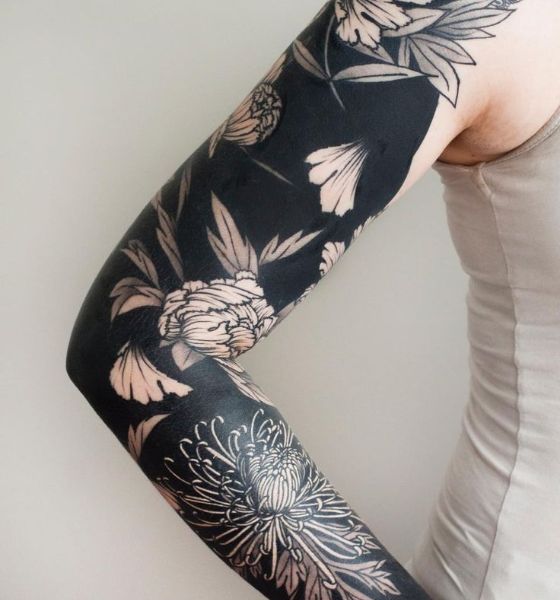
The art of tattooing originated many centuries ago. This is suggested by the Blackwork style: such drawings decorated their bodies by ancient Polynesian tribes. As the name suggests, only black ink is used. The main features of the style are covering large areas of the body, geometric and abstract images. It is convenient to disguise scars and other skin defects with the help of such tattoos. Blackwork tattoos look very effective and advantageously combine with other stylistic tattoo trends, as well as certain clothing and accessories.
5. Graphic
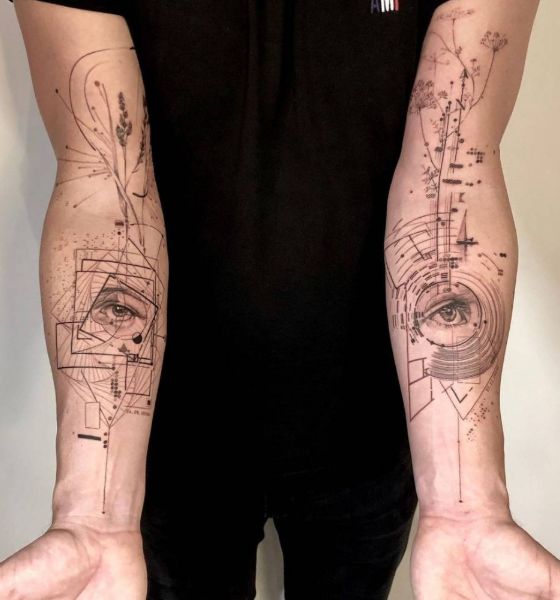
As in the case of blackwork, for the application of graphic tattoos is used strictly black. Even shades of gray are not allowed. The images, performed in this style resemble etchings from medieval folio: strict and clear lines, shadows, an abundance of parallel shading, and optionally dots. Smooth transitions are absent. Typical subjects for graphics are plants, animals, insects, mythical characters, reproductions of engravings. Drawing such images is a delicate work that requires great skill. The popularity of the style is promoted by its unisex character, in contrast, for example, to the more “feminine” watercolor.
6. Dotwork
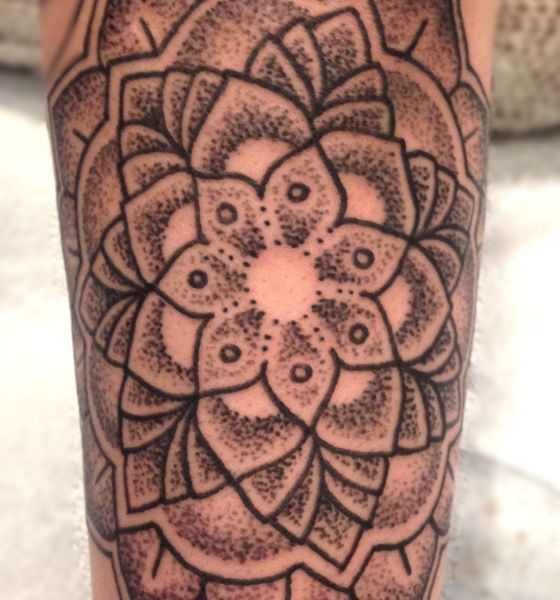
Like pointed artists, Dotwork artists create their masterpieces with the help of dots. Numerous dots are combined into full-fledged paintings, characterized by a special volume due to the gradation. Popular colors are black and gray, sometimes red inclusions are used. Applying images in this style requires from the master great assiduity and accuracy, but the result is worth it. Favorite subjects for Dotwork tattoos are religious and esoteric symbols, abstract patterns. Drawings are geometric and occupy large areas.
7. Cyberpunk
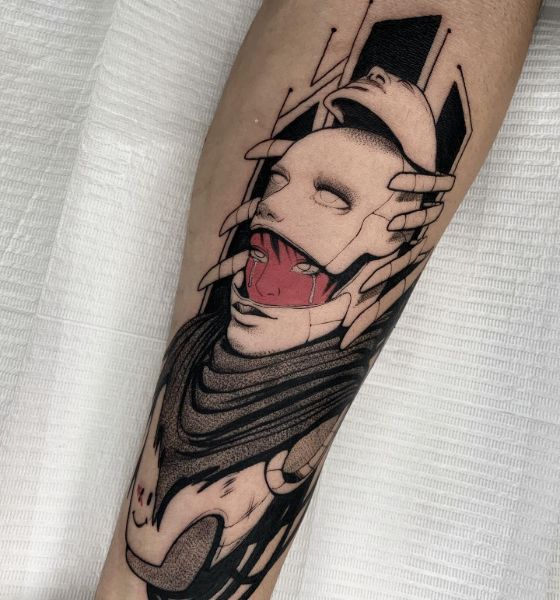
The term cyberpunk can be found in literature, cinema (e.g. “The Matrix”), and other forms of art. The term refers to a world where highly developed technology goes hand in hand with cultural decay and general degradation. Anti-utopian motifs found their expression in the world of tattoos as well: the cyberpunk style is embodied in the depiction of electronic circuits, cyborgs, and computer game heroes on the skin. Also, the subjects are related to genetic engineering and bio-implantation, which makes this style akin to biomechanics. The traditional color is black; the figure is characterized by the clearness of forms and contours, pseudo symmetry.
8. Linework
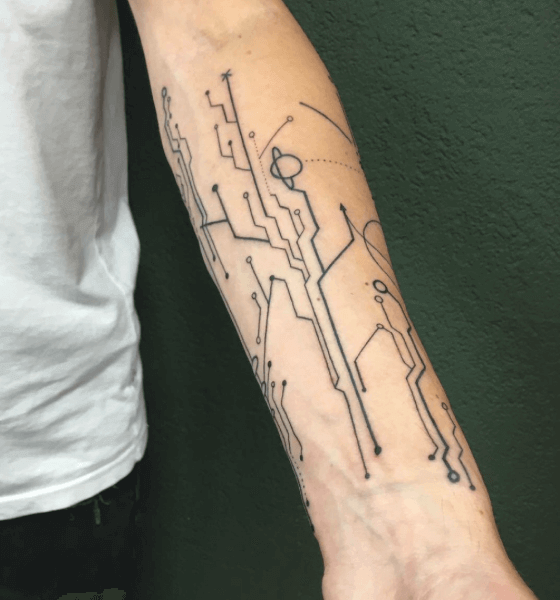
Linework intersects with Dotwork, but the main element is not a point, but a line. The preferred color is black, less often red. With the help of lines of varying thicknesses, the artist creates spectacular images of people, plants, animals, artificial objects, symbols. The drawing looks abstract but realistic. Its application requires great professionalism and experience so that the picture looks clear and accurate. The size gradation is great: you can create both tiny images and large full subjects on the chest, back, and limbs. Also, the linework is a unisex style of tattooing.
9. Minimalism
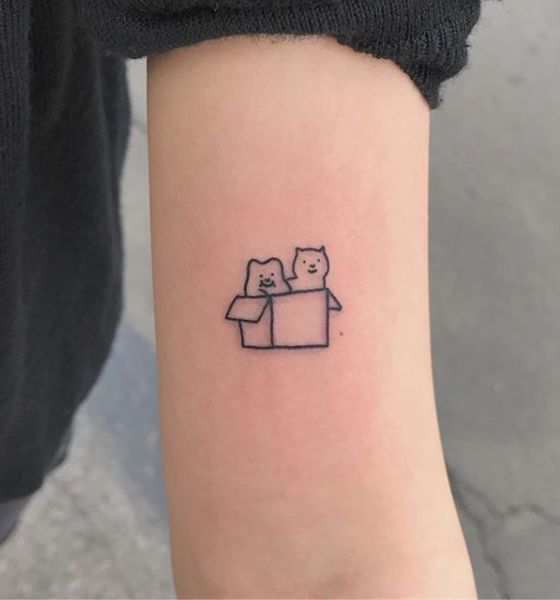
As is clear from the name, the main features of this trend are simplicity and the small size of the tattoo. On a small area of the body, a tattoo master creates an image in any style, and the color is used mostly black. Frequent motifs are tiny celestial objects, flowers, birds, short phrases, symbols. Usually, such an image carries a deep semantic load for the owner, for example, a reminder of a landmark event. Minimalism is the ideal choice for people who are planning to decorate their body with a tattoo for the first time, but do not dare to make a large-scale drawing or are afraid of pain when it is applied. Also in favor of this style is the affordable price.
10. New School
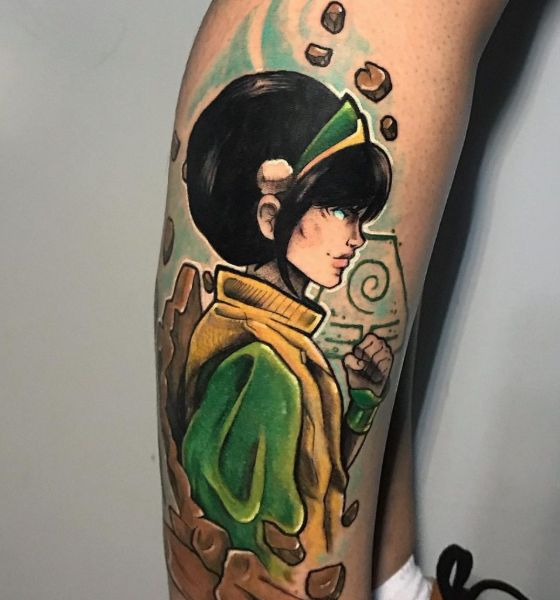
The technique appeared in the 80s. New School style has much in common with old-school style: typical heavy contours, images in a large scale. There are also differences: new school tattoos have a brighter and more diverse palette, colors sometimes shouting and poisonous. They are also compared to graffiti and hip-hop culture graphics. Unrealistic, fantastic subjects are typical: cartoon characters, comic book heroes, dragons, mermaids. Often in these images feel the spirit of freedom and thirst for adventure. Among the main fans of the style are gamers and fans of comics: such a picture will instantly emphasize the tastes of the owner.
11. Old School
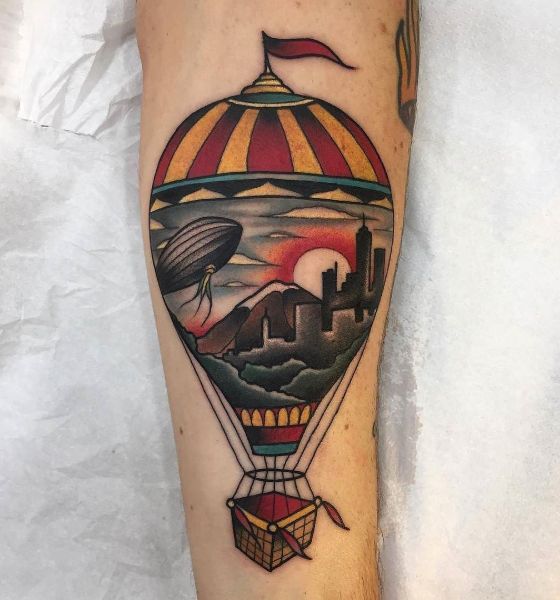
Old school style emerged at the end of the 19th century, thanks to the sailors. They decorated their bodies with pictures associated with marine subjects – anchors, the rose of the winds, sea birds, mermaids. Often, images of favorite women were applied. For superstitious sailors tattoo was not only an ornament but also a kind of amulet. Tattoos often looked crude and garish, as skilled craftsmen and quality tools did not yet exist. Today old-school tattoos look much neater and more attractive. The style is characterized by bright but simple colors, the large size of the pattern, the weak detailing, and comparative simplicity.
12. Oriental
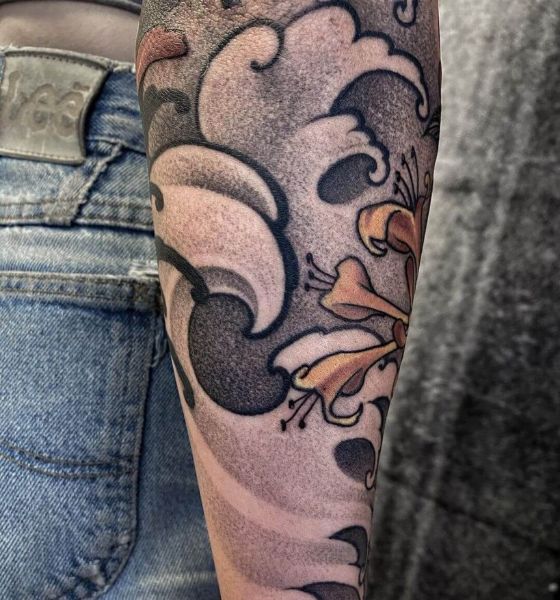
The refined and colorful world of the Orient could not help but be reflected in the tattoo art. When they talk about Oriental style they usually mean the artistic trends of Japan and China. That’s why they use as subjects dragons, geishas, fierce warriors, koi carps, and also uncountable natural beauties of Asian countries. These include sakura branches, lotus blossoms, maples, chrysanthemums, turtles, and birds. The oriental direction is characterized by a variety of colors, with a predominance of red, black, gold, and green shades. Before deciding on such a tattoo, you should get acquainted with its meaning: Eastern culture is full of symbolism.
13. Ornamental
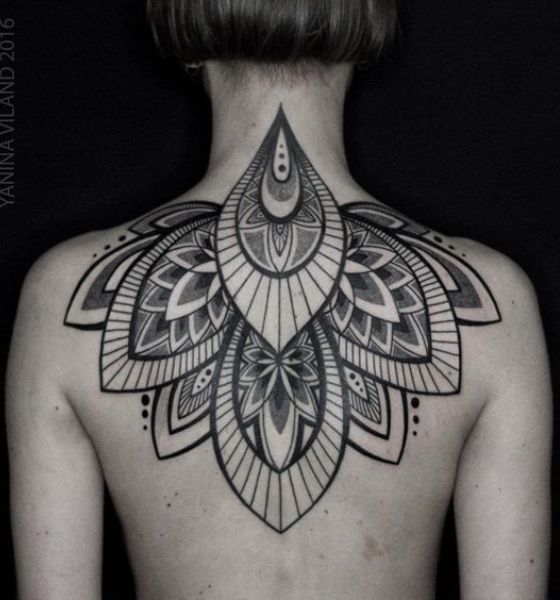
This is a style sometimes called Polynesian: islanders decorated themselves with such drawings as a sign of their high social status and used hedgehog needles or shark teeth as a tool. The ornamental style is characterized by clear, regular lines, formed into abstract patterns, and a narrow palette of colors. There are drawings depicting plants, celestial luminaries, symbols, objects of the cult of sailors, as well as wavy and spiral lines, Celtic patterns, geometric shapes. This style is recommended to choose if a person wants not just to make a tattoo, but to endow it with symbolism or amulet functions.
14. Polynesian Maori (Polynesian)
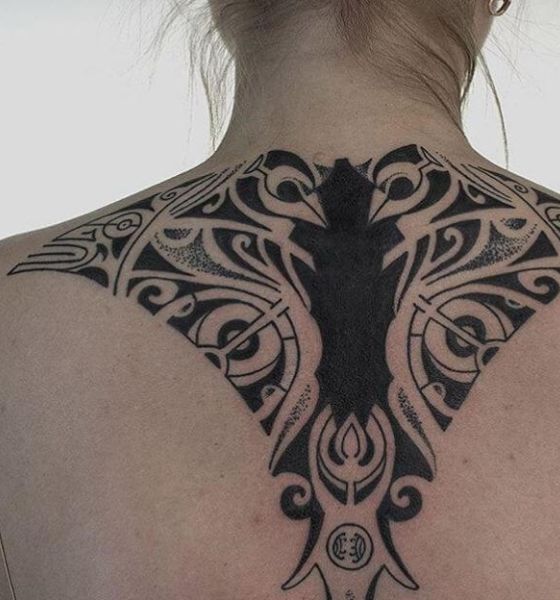
Polynesian tattoos (also called Maori, after the Pacific tribes) stylistically closely resemble ornamentals. The inhabitants applied tattoos to their skin with a fragment of bone, driving the paint deeper into the skin. Ethnic Maori patterns are still popular today and carry deep symbolism, so do not apply them solely for decorative purposes. Popular motifs are animals (sharks, rays, dolphins, and whales), geometric patterns, natural objects, and ritual tiki masks. The tattoos are usually performed in black and are characterized by symmetry and clarity.
15. Realism
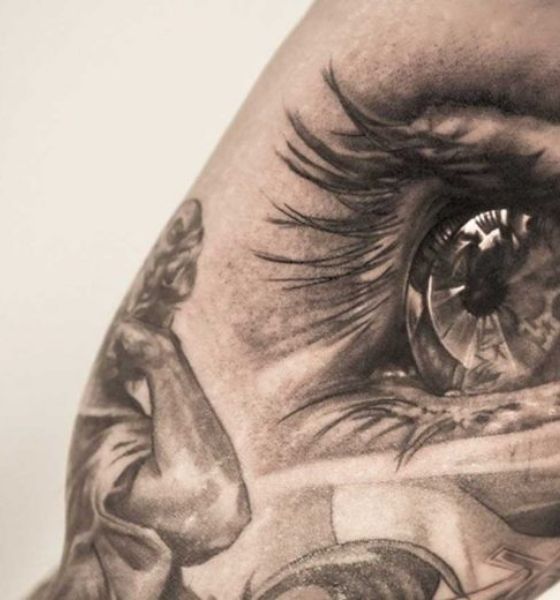
The Realism style originated in the XIX century and is recognized by tattoo masters as one of the most difficult. It’s worth the time, money, and effort: a full-body portrait of a celebrity or significant other – beloved, relative. Plants and animals are used, but less often. To apply such a complex drawing, very high-quality tools are needed. Realistic tattoos are done more often on the shoulder or sleeve. Popular motifs in men – roses, predators from the family of cats, female portraits, mythological female characters, comic book heroes. Girls give preference to flowers, birds, fish.
16. Sketch Style
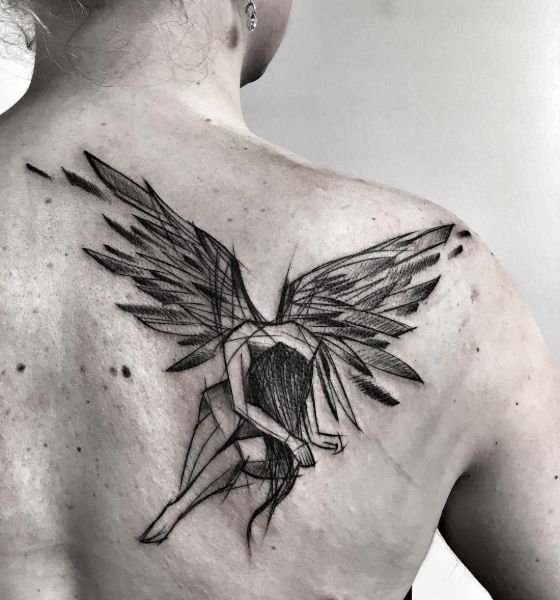
The word sketch translates from English as “sketch”. This is also the style of the sketch in the art of tattooing: the drawing resembles not a full-fledged finished image, but a careless light sketch with incomplete lines. At the same time, it looks elegant and artistic and does not require further painting. The color of the drawing is usually black. It is unknown how this trend originated: most likely, it was accidentally noticed during the application of the tattoo that the unfinished drawing has a deeper meaning than the finished image. The advantage of the sketch style is also that the picture can always be refined to a full picture if the client wants.
17. Japan (Traditional Japanese)
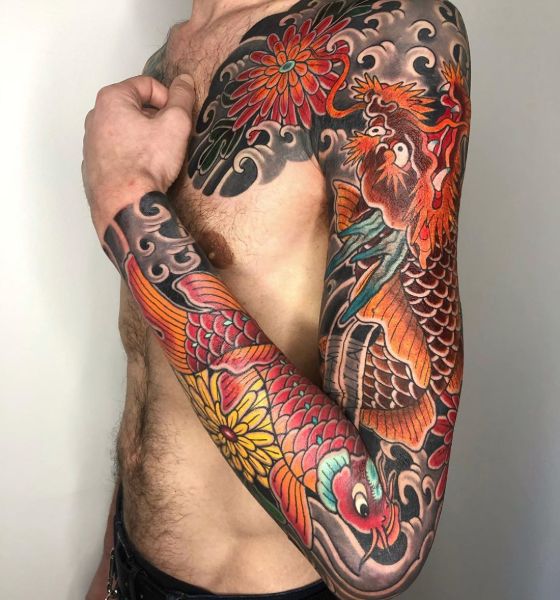
This exotic trend originated 10 thousand years ago and is closely intertwined with the oriental style. A Japanese tattoo features warlike samurai with naked swords, seductive geisha, colorful koi carps, blooming sakura branches, and dragons with wings spread in flight. There are also orchids, birds, and abstract geometric patterns that form bizarre patterns. The preferred tattoo colors are black, gold, jade, red and purple. The images are large enough, cover large areas of the body, and are filled with deep symbolism.
18. Neo-Traditional
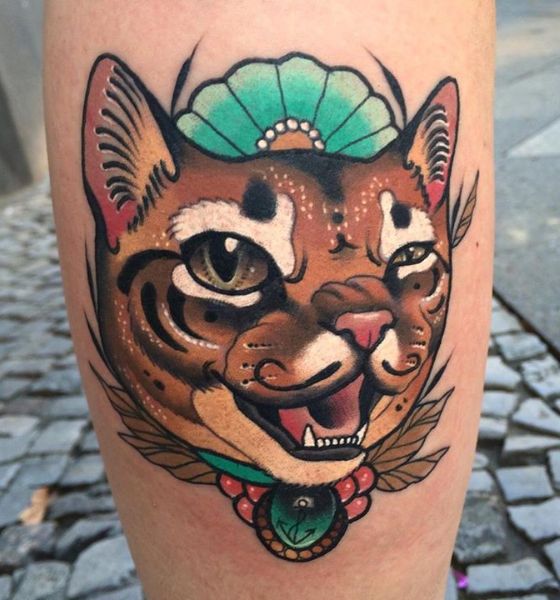
The neo-traditional style was born on the basis of the traditional style with its large lines and elements of “cartoon character”, but introduced new elements. It differs from the traditional in that it is more thorough and accurate. The images are characterized by the clarity of contours, the accessibility of the plot, executed in black or with a bright palette. Particularly effective look drawings, combined with the style of realism. The main motifs are images of people, skulls, toys, insects – usually imperceptible at first glance. As the direction is new, there are no clear recommendations on the place of application.
19. Traditional
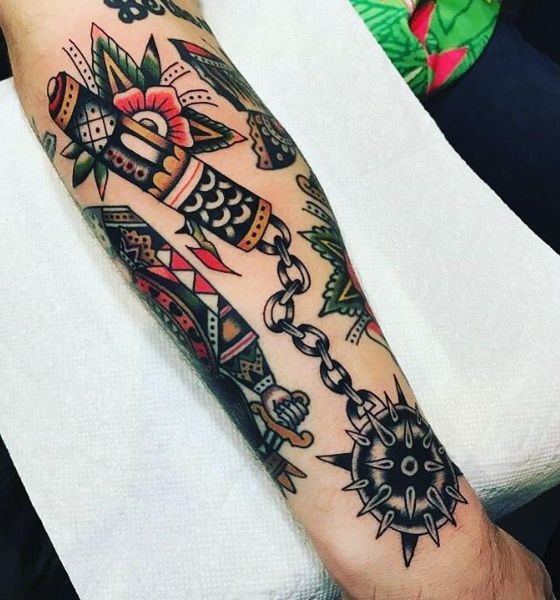
The originators of this trend, as well as many others, were European sailors who decorated themselves with flowers, skulls, pipes, hearts, and anchors, as well as ribbons with inscriptions. Such drawings served as amulets and amulets in the conquest of the dangerous sea element. Today, the traditional style is one of the most mass-produced and popular among both sexes. Women prefer images of butterflies, broken hearts, and men remain faithful to the sea theme. It is believed that such tattoos rarely carry deep meaning, but this does not detract from their attractiveness and relevance. Characteristic features are thick outlines and bright colors.
20. Traditional Tribal Tattoos
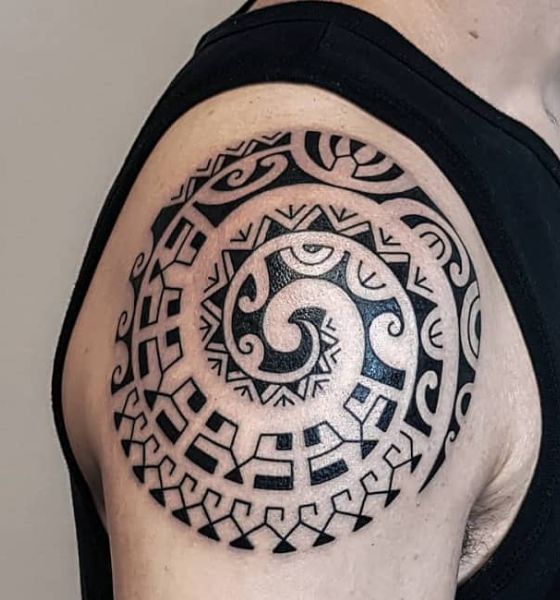
The word tribal means “tribal,” and it hints that the style also originated among the ancient tribes. Tattoos had a function as an ornament, a marker of social status, and a talisman, and their application was a sacred ritual. The tattoo also meant the wearer was brave and courageous as not everyone can withstand the intense pain of being tattooed with crude ancient tools. The style of tribal is characterized by clear, dark outlines and inherent meaning in the drawing. The patterns are geometric and cover large areas of the skin. Frequent motifs are images of animals, plants, heavenly bodies, mythical deities.
21. Trash Polka
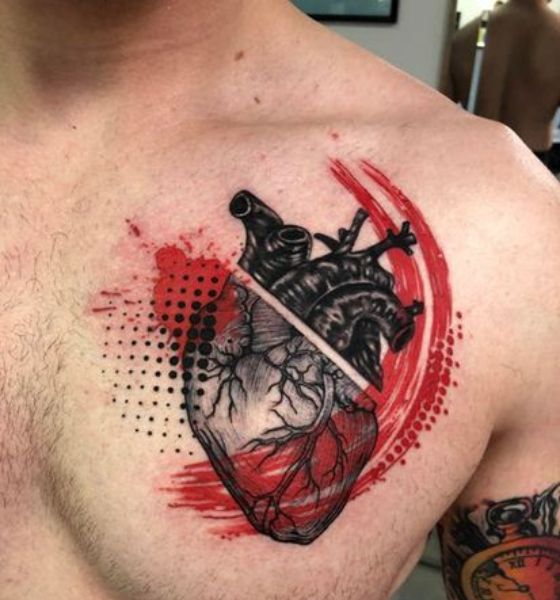
The founders of the style are German craftsmen Wolko and Simone, and the name it owes to the work of Strauss Tritsch-Tratsch-Polka. The direction is characterized by chaos, combining images of people, fragments of printed text, stains of paint and blood, brush strokes. The Tritsch-Polka style often includes elements of other directions: realism, linework, Dotwork. The dominant color is black, which used spectacular red flecks. The composition may seem overloaded, but the more interesting to study the picture, every detail. Such a tattoo suits people’s creativity and free-thinking, filled with a rebellious spirit.
Alse See: 35 Best Trash Polka Tattoo Ideas For The Tattoo Lovers
22. Hand Poked
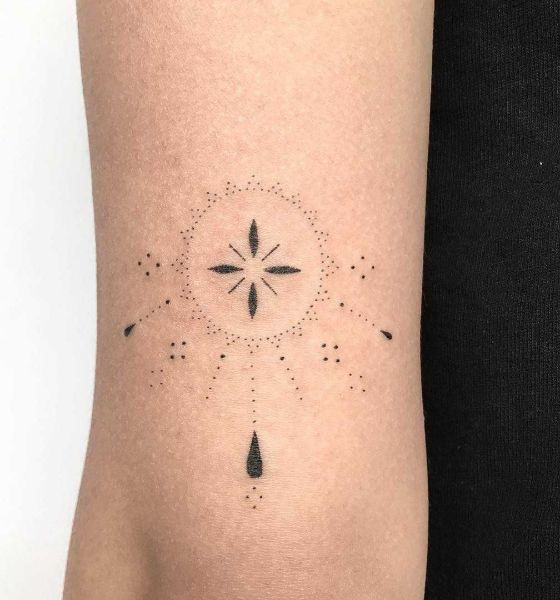
The Hand poked style tattoo echoes minimalism: the design is small, unpretentious, and usually done in black. It would seem that who would want to adorn themselves with such an unsightly drawing? The hand poked is a great way for beginner tattoo artists to get a feel for simple tattooing before moving on to complex ones. The style is popular among teenagers, inmates, and genuine tattoo art fans who are ready to experiment with all sorts of styles. And often, despite the primitiveness, the drawing is organically combined with professional tattoos on the body.
23. Black and White (Grayscale)
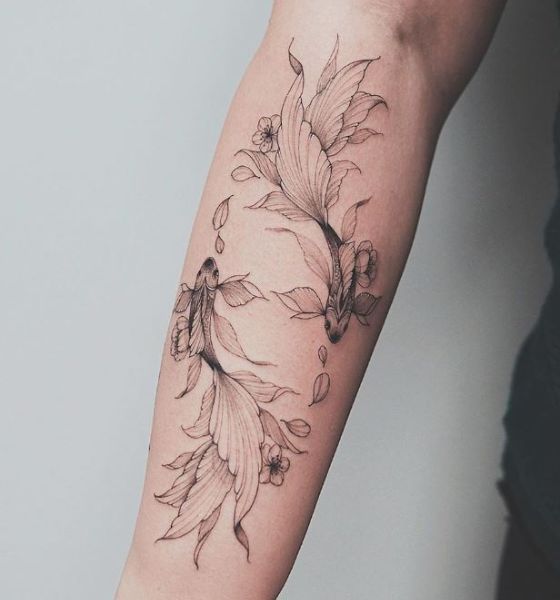
The Chicano tribes lived in what is now Texas and California, giving their name to an interesting tattoo trend. The style has been popular since the 1940s among Latin American criminals and prison inmates. The images carried deep symbolism and served as an identifying mark. Today, Chicano tattoos have lost their symbolism and are popular for their beauty, recognizability, and impactfulness. The dominant subjects are portraits of beautiful girls, drawings of dice and cards, jewelry, money, and weapons. They are executed in dark shades.
24. Chicano
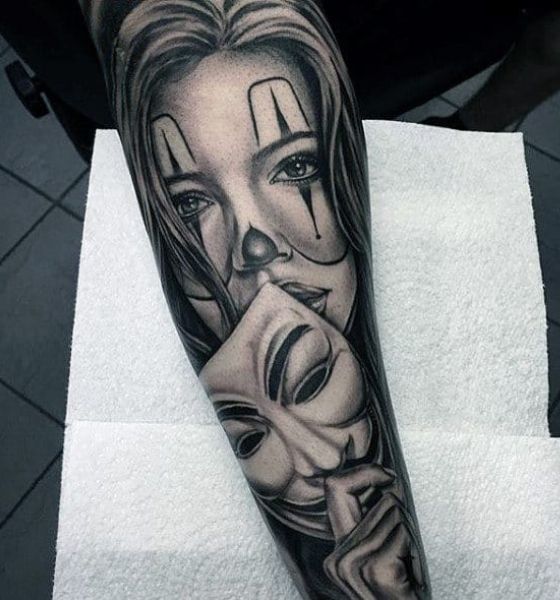
The Chicano tribes lived in what is now Texas and California, giving their name to an interesting trend in tattoos. The style has been popular since the 1940s among Latin American criminals and prison inmates. The images carried deep symbolism and served as an identifying mark. Today, Chicano tattoos have lost their symbolism and are popular for their beauty, recognizability, and impactfulness. The dominant subjects are portraits of beautiful girls, drawings of dice and cards, jewelry, money, and weapons. They are made in dark shades.
25. Ethnica
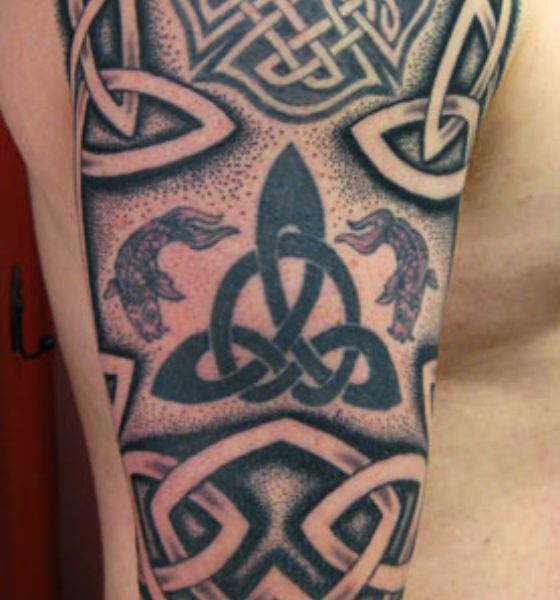
The direction of ethnic tattooing combines several styles: Polynesian, Celtic, ornamental, Indian, tribal, and others. Such body art is the oldest type of tattoo, which had a sacred meaning for the bearer. The patterns played the role of amulets, and also served as a kind of “passport” of the owner, for example, indicating the number of his military victories. Ethnic tattoos are often performed in black and occupy a large area of the body, and are distinguished by their harmony and geometricity. The motifs include images of wildlife, deities, symbols of the elements, celestial luminaries, and abstract patterns.
Bio: Rebecca Carter works as an essay writer for an online writing company that helps students with their writing assignments. Thanks to this company Rebecca can write articles about her experience. In her free time, she enjoys being in the mountains, going to the gym, horseback riding, and volunteering.

